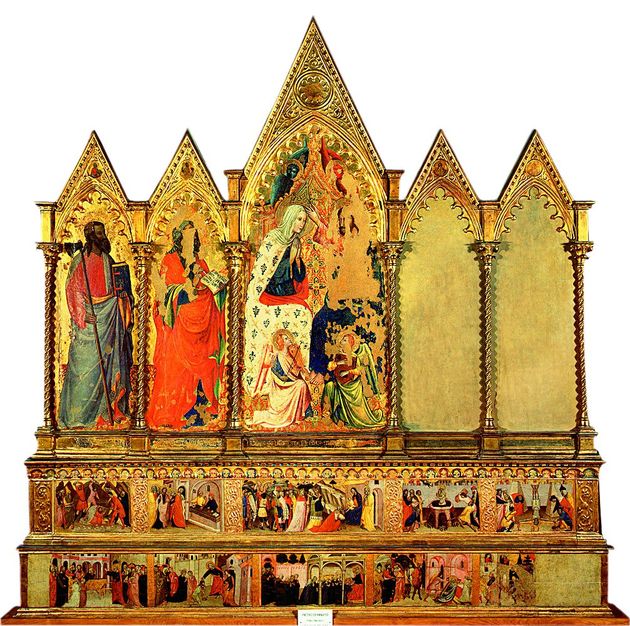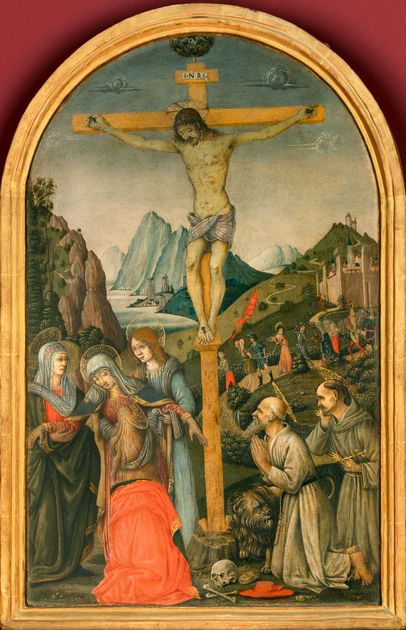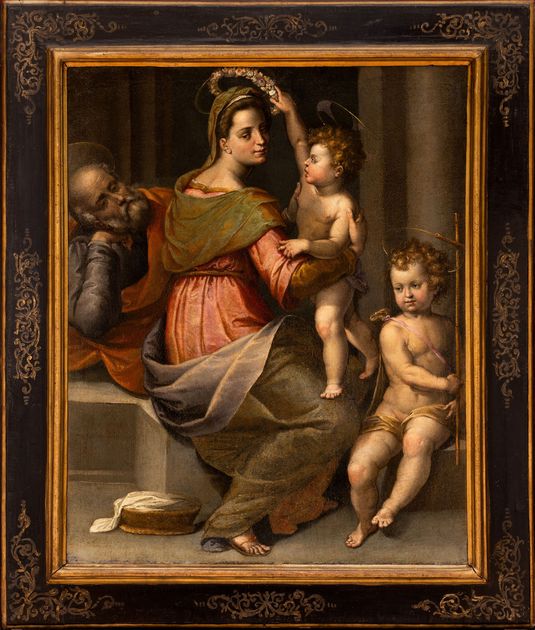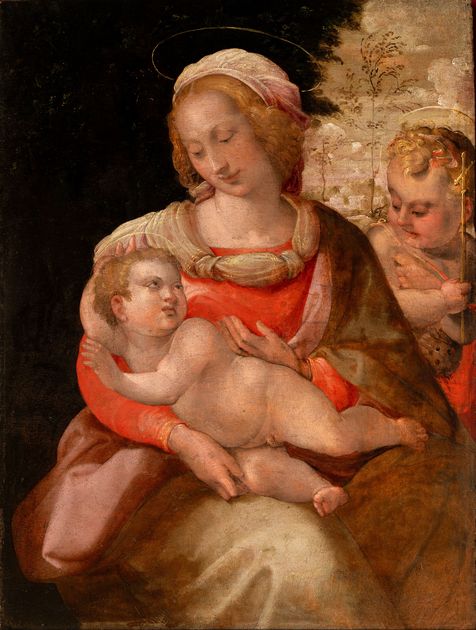The imposing theatrical scene was commissioned for the monastery of Santa Margherita in Prato, where Fra Diamante succeeded Filippo Lippi as chaplain in 1466 and where Lippi many years before had started to paint the Madonna of the Belt, leaving it incomplete. It is probable that Fra Diamante brought to completion this altarpiece before obtaining his personal commission for the Nativity.
The sections of the predella show three episodes from Christ’s childhood, in an unusual right-to-left sequence: the Massacre of the Innocents; the Adoration of the Magi and the Presentation at the Temple. While the friar’s typical style is recognisable, this work shows the clear influence of Sandro Botticelli and a new complexity recalling the school of Andrea del Verrocchio, which is particularly marked in the dynamic Massacre of the Innocents.
In the Adoration it has been suggested that the central figure in the group of three personages behind the Magi is a portrait of Carlo de’ Medici, the mulatto son of Cosimo the Elder, who became a provost in Prato in 1460. In some parts of the same scene, the hand of a young Filippino Lippi, son of Filippo, has also been identified, Filippo having been placed in Fra Diamante’s workshop after his father’s death. The young man on the right standing behind the Magi with his face turned to the left might be one of the first interventions assigned by Fra Diamante to Filippino, who interpreted it even more incredibly as a self-portrait. This theory is borne out by the sinuous forms of the young man’s face, the softer volumes and the more delicate shading as compared with Fra Diamante’s recognised style.


























































